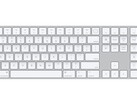The Google Pixel 5 faced some criticism owing to its use of a mid-range chipset instead of going the flagship SoC route like a majority of its Android contemporaries. With the upcoming Pixel 6, Google wants to make its presence in the flagship segment once again. To that effect, the search giant is turning to AI to make the Pixel 6 and Pixel 6 Pro stand apart by building its own AI and machine learning (ML) capable SoC called the Tensor.
Google is only teasing the Pixel 6 and Pixel 6 Pro's design for now, so we do not fully know what's in store with these devices. What we do know, however, is that Google will be bringing some of the Tensor Processing Unit (TPU) magic, seen in its server farms and enterprise, to mobile. Google only indicated that the Tensor part of the SoC will leverage advances in AI and ML applications. The details of the CPU, GPU, 5G modem, and RAM are still unclear as is who has designed them or licensed the IP to Google. That being said, we are hearing rumors that the Tensor SoC is likely to be fabbed on Samsung's 5 nm node.
Speaking to The Verge, Google's SVP of Devices and Services Rick Osterioh confirmed that the Pixel 6 would sport a 6.4-inch FHD+ display with a 90 Hz refresh rate while the Pixel 6 Pro will feature a 6.7-inch QHD+ 120 Hz display.
The Pixel 6 Pro will feature slightly curved edges with aluminum sides. It will be equipped with a triple-camera array including a wide-angle main camera, an ultrawide lens, and a 4X optical zoom telephoto lens. The Pixel 6, on the other hand, will feature a conventional flat design with matte rails and misses out on the telephoto camera. Both the Pixel 6 and the Pixel 6 Pro will be powered by the new Tensor SoC and a Titan M2 security chip and will also sport an in-display fingerprint sensor.
According to Osterioh, the Pixel 6 series will offer the most layers of hardware-based security compared to any other phone. There is also an "always-on computer" to handle low-power aspects such as an always-on display. Google is targeting an all-day battery life with the Pixel 6 lineup.
All these years, the Pixels were never really thought of as market share grabbers. But Osterioh wants to change that paradigm by investing a lot in marketing and court traditional Apple and Samsung buyers. And to that extent, expect pricing to hit upwards the US$1,000 mark.


 Deutsch
Deutsch English
English Español
Español Français
Français Italiano
Italiano Nederlands
Nederlands Polski
Polski Português
Português Русский
Русский Türkçe
Türkçe Svenska
Svenska Chinese
Chinese Magyar
Magyar
























